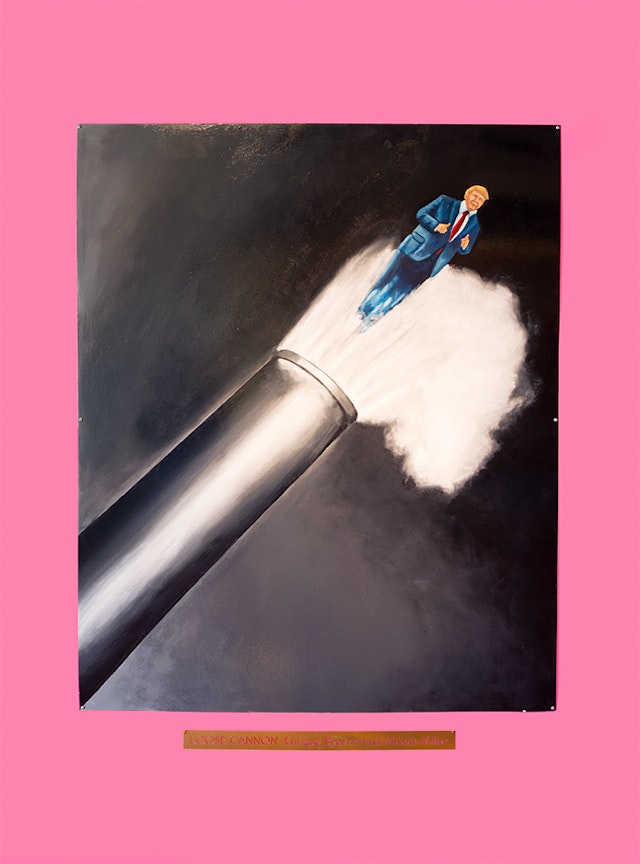‘Sideshow’
Events — Apr 28, 2017 A new exhibition by Abbott Miller responds to the Trump administration.

The Wall extends Alÿs’s idea to the realm of design and media imagery, adapting and remixing elements, and removing lettering to allow these “new” images to take on a different meaning when seen in relation to the border wall project. Miller worked with a group of current rótulistas in Mexico City to render new takes on the works of other graphic artists, some contemporary, others going back to the 19th century. Historic posters and graphic images by designers including Thomas Theodor Heine, Sandow Trocadero and Milton Glaser have been given a Trumpian spin, with guest appearances by Trump Train cronies such as Vladimir Putin and Kellyanne Conway. Circus imagery is prominent throughout the exhibition, as seen in Snake Charmer, in which Conway wrestles with a serpent that resembles the CNN logo.

“Deliberate or not, this cover reflected the majority of public opinion on Trump’s capability and intentions as President, leading to the start of vigorous meme creation and media attention,” says Miller.
The Wall could not have been produced without the talent and enthusiasm of the rótulistas Enrique Becerra, Diego Farías and Heriberto Garcia Dávila “Beto,” as well as the support of Marco V. Garrido Félix, who helped coordinate the work with sign painters in Mexico. ¡Muchas gracias!


Monogram is a typographic emblem of the relationship between Trump and Vladimir Putin. Trump has expressed support and admiration for Putin’s “strongman” leadership of Russia through public statements and on Twitter. The lack of clarity about the nature and extent of communication and coordination between Putin, Russian hackers and the Trump circle suggests that there are deeper connections between the American election and Putin’s interest in a Trump presidency, making him the shadow “VP” of the administration. The eight-foot-tall aluminum letters are festooned with another triumphal Twitter garland, made of brass.



Trumptych is comprised of three large brass stencils, a medium associated with the tradition of political protest posters. A building in the form of a hand is based on the famous icon for “Man with the Golden Arm” (1956), designed by Saul Bass. A champagne fountain is suggestive of trickle-down economics, a theory arguing that wealth at the top eventually trickles down to the bottom of the economy. A 1916 poem by the poet Guillaume Apollinaire called “It’s Raining” famously creates an image of rain with its drizzle of lettering. In the context of Trumptych, the dark edges of the poem come to the foreground, just as the Saul Bass image of the hand becomes a tower of aggression cast in gold.










Sideshow remains on view through May 15 at the Robert Busch School of Design at the Michael Graves College at Kean University in Union, New Jersey.